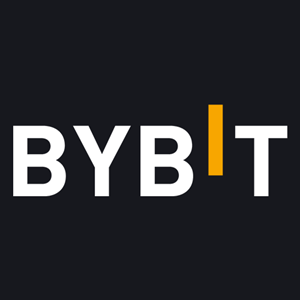The Ultimate Guide to Crypto Security: How to Avoid Getting Hacked in 2025 February, 2025
With crypto hacks and scams becoming increasingly sophisticated in 2025, securing your digital assets has never been more critical. This guide explores the biggest security threats, best practices for protecting your funds, and advanced strategies to keep your crypto safe from hackers.
 Written by Nikolas Sargeant
Written by Nikolas Sargeant
| 거래소 수수료 | 입금 방식 | |||||||||
|---|---|---|---|---|---|---|---|---|---|---|
| 이름 | 지원 암호화폐 | 테이커(Taker) 수수료 | 메이커(Maker) 수수료 | 인출 수수료 | 전신 송금 | 신용 카드 | US 허용 | - 이후 활동 중 | Offer | |

바이비트 (Bybit)
Contract Trading Exchanges
|
182 | 0.06% | 0.01% | 0.0005 | 2018 |
최대 600USD 의 보상을 받으십시오
|
방문 | |||

바이낸스 (Binance)
Centralized Exchanges
|
431 | 0.10% | 0.10% | 0.0002 | 2017 |
웰컴 보너스 100USD 를 받으십시오
|
방문 | |||

SimpleSwap
Centralized Exchanges
|
466 | 1.21% | 1.21% | 0.000079 | 2018 |
|
방문 | |||

BingX
Contract Trading Exchanges
|
326 | 0.05% | 0.02% | 0.000079 | 2018 |
가입하고 120 USD의 보상을 받으십시오!
|
방문 | |||

Zoomex
Centralized Exchanges
|
9 | 0.60% | 0.20% | 10 USD | 2021 |
KYC-FREE, $45,115 AVAILABLE IN REWARDS & 20% FEES OFF
|
방문 | |||

코인베이스 (Coinbase)
Centralized Exchanges
|
136 | 2.00% | 2.00% | 0.000079 | 2012 |
GET USD 5 SIGN-UP BONUS!
|
방문 | |||
Crypto security has never been more critical than in 2025. With the rising adoption of digital assets, hackers are deploying more sophisticated methods to exploit traders, investors, and exchanges. Unlike traditional banking, cryptocurrency transactions are irreversible, meaning that once stolen, funds are nearly impossible to recover.
In 2024 alone, hackers stole $3.8 billion from crypto users and platforms. One of the most notorious incidents involved a fake Binance customer support scam, where fraudsters tricked investors into handing over their private keys. The growth of decentralized finance (DeFi) has also introduced new vulnerabilities, with hackers exploiting smart contract bugs to drain millions from protocols.

Governments are struggling to regulate the industry, leaving both centralized exchanges (CEXs) and DeFi projects exposed to evolving security threats. Reputable exchanges like Bybit, Coinbase, BingX, SimpleSwap, and Zoomex implement strong security protocols, but user responsibility remains key to avoiding financial loss. This guide will take you through the most common threats, best security practices, and advanced protection strategies.
Common Crypto Security Threats
Cryptocurrency, while revolutionary in its technology and potential, has become an attractive target for malicious actors. Understanding the landscape of threats is crucial for anyone involved in the crypto space. Let's explore some of the most prevalent security risks that crypto users face today.
Phishing Attacks
How It Works: Phishing is a social engineering attack where scammers impersonate legitimate services to steal user credentials. This includes fake exchange login pages, fraudulent email alerts, and impostor customer support representatives.
How to Protect Yourself:
- Always check URLs before logging in.
- Avoid clicking links in emails or messages.
- Use hardware authentication keys for additional security.
- Verify official contacts through exchange websites.
Example: A fake Coinbase security alert in 2024 tricked thousands of users into entering their passwords, leading to over $5 million in stolen funds.

Exchange Hacks
Even reputable exchanges can be hacked. In 2024, a mid-sized exchange lost $75 million when attackers exploited vulnerabilities in their withdrawal processing system. Platforms like Bybit, BingX, and Zoomex implement cold storage and proof-of-reserves (PoR) to enhance security, but users should never rely entirely on exchanges for asset protection.
Best Practices:
- Store long-term holdings in a hardware wallet.
- Enable withdrawal whitelisting for added protection.
- Regularly review security audits of your exchange.
- Malware & Keyloggers (100 words)
How It Works: Hackers deploy keyloggers to track your keystrokes and steal private keys or passwords. Some malware replaces wallet addresses copied to the clipboard, rerouting funds to hacker-controlled accounts.
How to Protect Yourself:
- Keep your system updated with security patches.
- Use antivirus software and run regular scans.
- Never store private keys in digital formats.
Example: An investor lost $200K when malware exposed his Metamask seed phrase stored in a Google Doc.
SIM Swaps & Identity Theft
How It Works: Hackers take control of your phone number by tricking mobile carriers into transferring SIM card access. This allows them to bypass SMS-based two-factor authentication (2FA) and reset exchange passwords.

How to Protect Yourself:
- Use app-based 2FA (Google Authenticator, YubiKey) instead of SMS.
- Enable SIM lock protection with your mobile provider.
Example: A trader lost $500K when hackers performed a SIM swap and reset his Coinbase and Bybit passwords.
Best Practices for Securing Your Crypto
In 2025, cryptocurrency security is more critical than ever. With the rise of sophisticated hacks and scams, knowing how to protect your digital assets is essential. Whether you're a seasoned trader or a beginner, following best practices can help you stay ahead of potential threats.
Choosing a Secure Crypto Exchange
Not all crypto exchanges are created equal. Some prioritize security, while others may cut corners, putting user funds at risk. Here are the key features to look for in a secure exchange:
- Cold Wallet Storage: A reputable exchange should store most of its users' funds in cold wallets, which are offline and immune to online hacks. For instance, Bybit keeps 95% of user funds in cold storage, minimizing exposure to cyber threats. Zoomex uses AI fraud detection to detect suspicious activities before they escalate.
- Proof of Reserves: Transparency is crucial. Exchanges that provide proof of reserves, such as Coinbase and BingX, allow users to verify that their funds are backed 1:1 and not being misused.
- Withdrawal Security: Look for exchanges that implement additional withdrawal security measures. Bybit, for example, enforces a withdrawal delay feature, allowing users to cancel withdrawals in case of unauthorized access.

Why Self-Custody is Safer
While exchanges provide convenience, they remain vulnerable to hacks and internal fraud. Self-custody—storing your crypto in a personal wallet—offers better security. With a hardware wallet like Ledger or Trezor, you control your private keys, ensuring no exchange can freeze or mismanage your funds.
Example: “Bybit keeps 95% of user funds in cold storage, while Zoomex uses AI fraud detection to prevent hacks.”
How to Set Up a Secure Wallet
Choosing the right wallet is essential for safeguarding your crypto. There are two main types:
- Hot Wallets (e.g., MetaMask, Trust Wallet): These are connected to the internet, making them convenient but more vulnerable to hacks.
- Cold Wallets (e.g., Ledger, Trezor): These are offline hardware wallets, making them the best choice for long-term storage.
Step-by-Step Guide to Secure Wallet Setup
- Purchase a Hardware Wallet: Buy a Ledger or Trezor from the official website to avoid counterfeit devices.
- Secure Your Seed Phrase: Write down your 12- or 24-word seed phrase on paper—never store it online or on a digital device.
- Use a Hot Wallet for Daily Transactions: Keep only small amounts of crypto in a hot wallet for trading or daily use.
Example: “A trader lost 7,002 BTC because he threw away a hard drive containing his private keys.”
Using 2FA and Security Keys
Adding extra layers of security to your accounts can prevent unauthorized access.
- App-Based 2FA: Google Authenticator is a safer alternative to SMS-based 2FA, which can be hijacked via SIM swap attacks.
- Hardware Security Keys: Devices like YubiKey and Titan Security Key add an extra layer of protection, making it nearly impossible for hackers to access your accounts.
Example: “Zoomex requires hardware security keys for withdrawals over $100K, preventing many large-scale hacks.”
The Importance of Private Keys & Seed Phrases
A common saying in crypto is: Not your keys, not your crypto! If you don’t control your private keys, you don’t own your crypto.
- Never store your seed phrase online: Hackers can access cloud storage, emails, and even screenshots.
- Keep multiple physical backups: Store your seed phrase in different secure locations.
Example: “In 2024, an investor accidentally revealed his seed phrase on a YouTube livestream—hackers drained his wallet within minutes.”
Avoiding Crypto Scams & Fraud
As crypto adoption grows, so do scams. Knowing how to identify and avoid fraudulent schemes can save you from losing your hard-earned assets.
Ponzi Schemes & Fake Investment Platforms
Scammers lure victims with promises of guaranteed profits. Some warning signs include:
- Unrealistic Returns: If an investment offers 10% daily returns, it's likely a scam.
- Referral Bonuses: Many scams rely on recruiting new investors to pay old ones.
- Lack of Transparency: Legitimate platforms provide clear information on their operations, team, and financials.
Example: “A fake AI trading bot promised 500% returns. Investors lost over $10M when the founders vanished.”
Rug Pulls & Fake Tokens
A rug pull happens when developers create a token, pump its price, and then disappear with investors' funds. To avoid falling for fake tokens:
- Check Liquidity Locks: Legitimate projects lock liquidity to prevent sudden withdrawals.
- Verify Smart Contract Audits: Projects with third-party audits are generally safer.
- Research the Developers: If the team is anonymous and unverified, it's a red flag.
Example: “The Squid Game token rug pull saw investors lose $3 million overnight.”

Social Engineering Attacks
Hackers don’t always rely on technical exploits; they often manipulate people into giving up their credentials.
- Beware of Fake Support Staff: Scammers impersonate customer support on Telegram, Twitter, and Discord.
- Never Share Private Information: No legitimate company will ask for your private keys, seed phrase, or passwords.
Example: “Hackers pretended to be BingX customer support on Telegram, stealing over $500K from unsuspecting traders.”
By following these best practices and staying vigilant, you can significantly reduce your risk of falling victim to hacks and scams in 2025. Crypto security is ultimately in your hands—stay informed and protect your assets.
Advanced Crypto Security Measures
In 2025, the threats to cryptocurrency security continue to evolve, making it crucial for investors and businesses to adopt advanced security measures. While basic practices like using strong passwords and enabling two-factor authentication are essential, more sophisticated approaches are needed to protect high-value assets. This section explores key security strategies, including multi-signature wallets, the difference between cold and hot storage, and understanding smart contract risks.

Multi-Sig Wallets for Maximum Protection
Multi-signature (multi-sig) wallets add an extra layer of security by requiring multiple approvals before executing a transaction. Unlike traditional wallets that rely on a single private key, multi-sig wallets distribute control across multiple keys. This setup significantly reduces the risk of unauthorized access due to hacking, phishing, or insider threats.
Multi-sig wallets are particularly beneficial for businesses, hedge funds, and high-net-worth individuals who require added security for their crypto holdings. Popular multi-sig solutions include Gnosis Safe and Casa, both offering customizable security policies.
Example: “A crypto hedge fund uses a Gnosis Safe multi-sig to prevent unauthorized withdrawals.”
Cold Storage vs. Hot Storage
Understanding the distinction between cold and hot storage is crucial for securing digital assets.
- Cold Storage: Private keys are stored offline, making them immune to online attacks. This method is ideal for long-term holdings and high-value assets but requires extra effort to access funds.
- Hot Wallets: Connected to the internet, hot wallets offer convenience for daily transactions but are more susceptible to hacking, phishing, and malware attacks.
To mitigate risks, users should adopt a hybrid approach—keeping a small portion of funds in a hot wallet for liquidity while storing the majority in cold storage.
Example: “Bybit encourages users to keep only trading funds on their platform, storing the rest in cold wallets.”

Understanding Smart Contract Risks
Smart contracts are self-executing agreements that power decentralized finance (DeFi) platforms. While they offer efficiency and automation, vulnerabilities in their code can be exploited by hackers, leading to significant financial losses.
Common smart contract risks include:
- Reentrancy attacks: A malicious contract repeatedly calls back into the vulnerable contract before the initial execution is complete.
- Unchecked external calls: Hackers manipulate data flows within the contract to extract funds.
- Front-running attacks: Exploiting transaction order manipulation on blockchain networks.
To reduce risk exposure, users should:
- Only use DeFi platforms with audited smart contracts.
- Regularly check security reports from reputable auditors like CertiK or Quantstamp.
- Diversify holdings to avoid overexposure to any single protocol.
Example: “A flawed smart contract allowed an attacker to drain $120M from a DeFi protocol.”
Secure Trading & Storing on Exchanges
As cryptocurrency adoption continues to rise, ensuring secure trading and storage on exchanges is crucial. While centralized exchanges offer convenience and liquidity, they also present security risks such as hacking, insider threats, and regulatory uncertainty. This section explores the security features of major exchanges and best practices for securely withdrawing and storing funds.
Security Features of Leading Exchanges
Different exchanges implement various security measures to protect user funds. Here’s a breakdown of security features from some of the most reputable platforms:
- Bybit: Implements multi-layered security, including cold wallet storage for the majority of funds and an insurance fund to cover potential losses from system failures.

- Coinbase: Provides FDIC insurance for U.S. dollar balances, two-factor authentication (2FA), and AI-driven fraud detection.
- BingX: Offers multi-signature cold storage and regular security audits to minimize the risk of breaches.
- SimpleSwap: A non-custodial exchange that reduces exposure to hacking by not requiring users to store funds.
- Zoomex: Focuses on security through strict KYC policies and encrypted transaction processing.
How to Securely Withdraw and Store Funds
Despite exchange security measures, self-custody remains the safest way to protect digital assets. Here are key steps for securely withdrawing and storing funds:
- Enable Security Features: Before making a withdrawal, activate two-factor authentication (2FA), anti-phishing codes, and withdrawal whitelist features on your exchange account.
- Use a Trusted Wallet: Withdraw funds to a reputable hardware or software wallet. Hardware wallets like Ledger and Trezor provide offline protection against cyber threats.
- Avoid Keeping Large Balances on Exchanges: Store only the amount needed for active trading on exchanges and transfer excess funds to cold storage.
- Verify Withdrawal Addresses: Always double-check recipient wallet addresses before confirming transactions to prevent phishing or address replacement attacks.
- Monitor Account Activity: Regularly review exchange account activity to detect any unauthorized access.
- Use Decentralized Exchanges for Added Security: When possible, consider using decentralized exchanges (DEXs) that allow you to trade directly from your wallet, reducing exposure to centralized risks.
- Split Funds Across Multiple Wallets: Diversify risk by storing funds across multiple wallets and platforms, ensuring that a security breach in one place does not compromise all assets.
- Regularly Update Wallet and Exchange Security Settings: Enable the latest security features offered by your exchange or wallet provider, including withdrawal limits, biometric authentication, and hardware security modules (HSMs).
Exchange Insurance and Fund Safety
While some exchanges provide insurance coverage for user funds, it is important to understand the limitations:
- Coinbase Insurance: Covers U.S. dollar balances and crypto assets held in hot wallets but does not protect against individual account hacks.
- Binance SAFU (Secure Asset Fund for Users): A fund that compensates users in case of major security breaches.
- Bybit’s Risk Protection Measures: Maintains an emergency fund to cover certain losses, but users are advised to store long-term holdings in personal wallets.
Example: “Coinbase insures user funds, but self-custody remains the safest option.”
Future of Crypto Security: Trends in 2025 and Beyond
As the crypto industry matures, security threats continue to evolve, requiring new innovations and approaches to safeguard digital assets. In 2025 and beyond, key trends such as AI-powered security measures, quantum-resistant cryptography, and regulatory advancements will shape the future of crypto security.
AI-Powered Security Measures
Artificial intelligence is playing an increasingly crucial role in detecting and mitigating security threats in the crypto space. AI-driven security systems can:
- Identify and block suspicious transactions in real time.
- Detect unusual user behavior to prevent account breaches.
- Enhance fraud detection by analyzing vast amounts of blockchain data for anomalies.
Exchanges and wallet providers are integrating AI-powered security features to offer better protection against phishing scams, unauthorized transactions, and social engineering attacks. With machine learning continuously improving detection accuracy, AI-driven security is expected to become a standard component of crypto protection strategies.

Quantum-Resistant Cryptography
One of the most significant emerging threats to blockchain security is quantum computing. Current cryptographic algorithms, including those used in cryptocurrencies, could eventually be broken by quantum computers. To counteract this risk, researchers and blockchain developers are working on quantum-resistant cryptography.
Post-quantum cryptographic algorithms are designed to withstand attacks from quantum computers. Networks like Bitcoin and Ethereum are exploring potential upgrades to integrate quantum-safe encryption methods, ensuring long-term security for digital assets. As this technology advances, early adoption of quantum-resistant protocols will be crucial for maintaining blockchain integrity.
Government Regulations for CEXs & DeFi
Government scrutiny of centralized exchanges (CEXs) and decentralized finance (DeFi) platforms is intensifying. In 2025, we are seeing more stringent regulations aimed at enhancing consumer protection and reducing illicit activities, such as money laundering and fraud.

Centralized exchanges are being required to implement stronger Know Your Customer (KYC) and Anti-Money Laundering (AML) measures, making it harder for bad actors to exploit platforms. At the same time, regulators are exploring ways to impose compliance standards on DeFi platforms, which have traditionally operated with minimal oversight. Global coordination among governments is also increasing, with efforts to create unified regulatory frameworks that ensure security standards are consistently enforced across borders.
While regulations can enhance security, they also raise concerns about privacy and decentralization. Crypto users must stay informed about evolving laws and choose platforms that align with both security and personal privacy preferences.
Conclusion & Final Security Checklist
As the crypto landscape continues to evolve, security remains a top priority for investors and users alike. Implementing best practices can significantly reduce the risk of hacks, scams, and asset loss.
A strong authentication system is essential—always enable Two-Factor Authentication (2FA) and consider using hardware security keys for extra protection. Self-custody remains the safest approach, with private wallets (hardware or software) reducing reliance on exchanges and mitigating the risks associated with centralized platforms. Users must also stay cautious about scams and phishing attempts, never sharing private keys, seed phrases, or sensitive account details.
Keeping security settings updated is another crucial step. Wallet software, exchange accounts, and security features should be reviewed regularly to ensure the latest protections are in place. Diversifying holdings across multiple wallets and platforms also helps mitigate risks in case of a security breach, reducing exposure to any single point of failure. Those engaging with DeFi platforms should carefully verify smart contracts before committing funds, checking security audits and reviews to avoid vulnerabilities.

For safe trading, choosing reputable platforms is key. Trading only on well-established and regulated exchanges ensures a higher level of security. Enabling withdrawal whitelists further strengthens security by restricting crypto withdrawals to trusted addresses, preventing unauthorized transfers. Staying informed about security news and emerging threats is equally important, as the crypto landscape continuously changes with new developments. Finally, long-term investments should be stored in cold storage, ensuring offline protection against hacking attempts.
By adopting these security measures and staying vigilant, crypto users can navigate the digital asset space safely and confidently. As the industry continues to evolve, proactive security practices remain the best defense against potential threats.
| 거래소 수수료 | 입금 방식 | |||||||||
|---|---|---|---|---|---|---|---|---|---|---|
| 이름 | 지원 암호화폐 | 테이커(Taker) 수수료 | 메이커(Maker) 수수료 | 인출 수수료 | 전신 송금 | 신용 카드 | US 허용 | - 이후 활동 중 | Offer | |

바이비트 (Bybit)
Contract Trading Exchanges
|
182 | 0.06% | 0.01% | 0.0005 | 2018 |
최대 600USD 의 보상을 받으십시오
|
방문 | |||

바이낸스 (Binance)
Centralized Exchanges
|
431 | 0.10% | 0.10% | 0.0002 | 2017 |
웰컴 보너스 100USD 를 받으십시오
|
방문 | |||

SimpleSwap
Centralized Exchanges
|
466 | 1.21% | 1.21% | 0.000079 | 2018 |
|
방문 | |||

BingX
Contract Trading Exchanges
|
326 | 0.05% | 0.02% | 0.000079 | 2018 |
가입하고 120 USD의 보상을 받으십시오!
|
방문 | |||

Zoomex
Centralized Exchanges
|
9 | 0.60% | 0.20% | 10 USD | 2021 |
KYC-FREE, $45,115 AVAILABLE IN REWARDS & 20% FEES OFF
|
방문 | |||

코인베이스 (Coinbase)
Centralized Exchanges
|
136 | 2.00% | 2.00% | 0.000079 | 2012 |
GET USD 5 SIGN-UP BONUS!
|
방문 | |||


